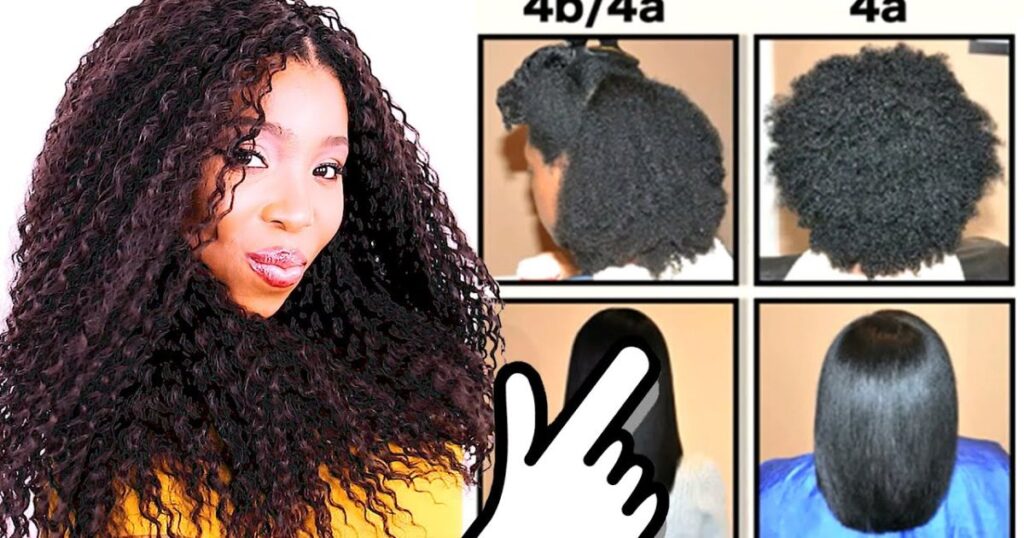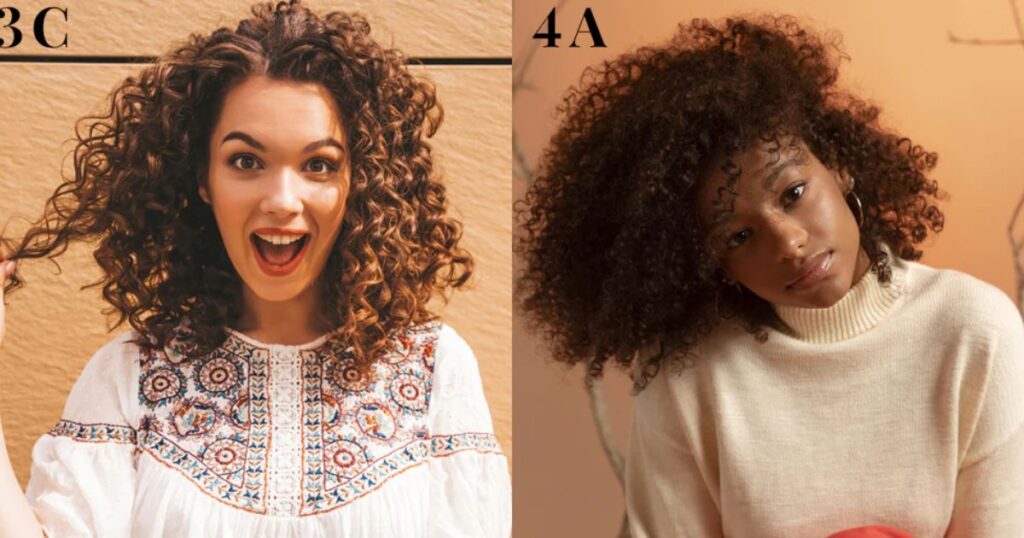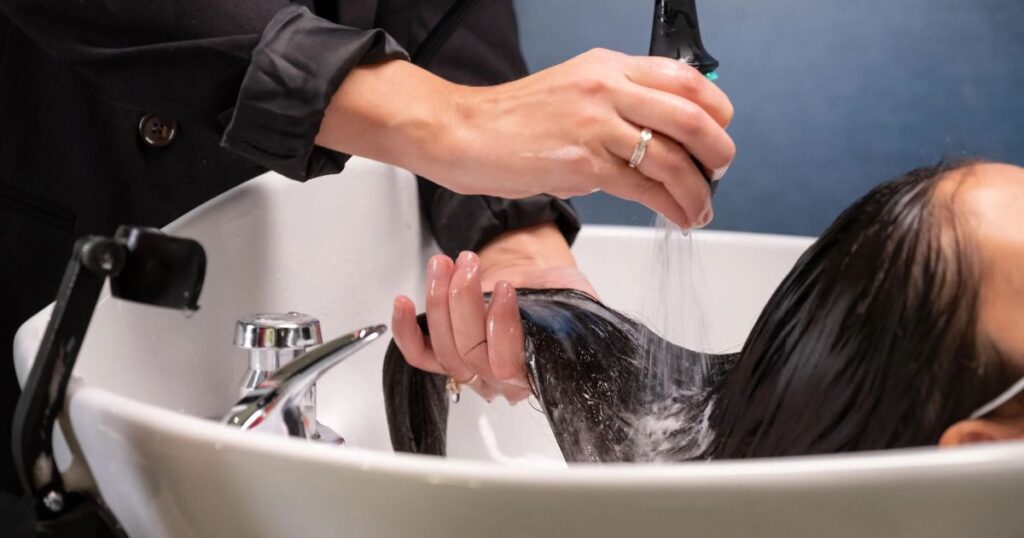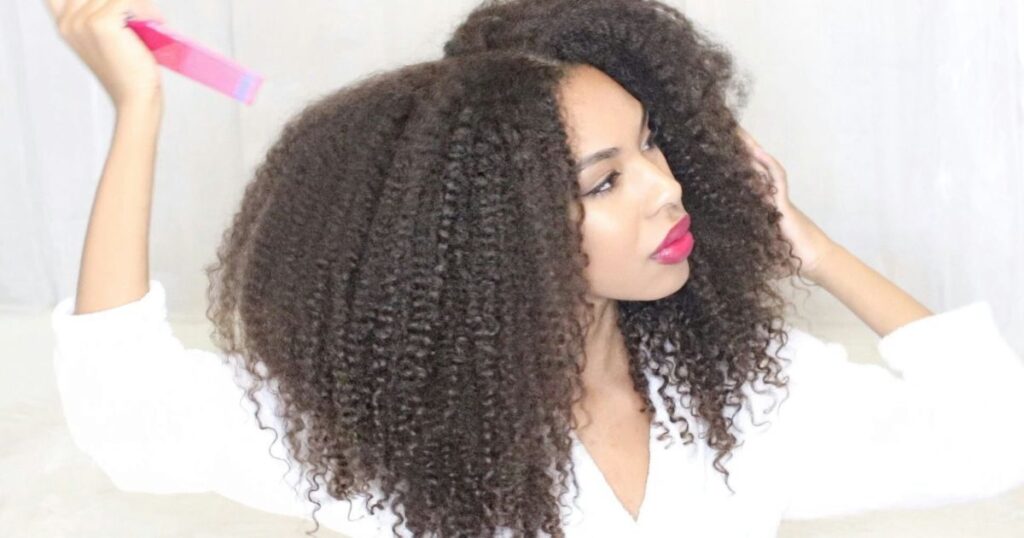If you have tightly coiled, wiry strands that form a close-cropped pattern on your head, you likely have the 4A hair type. Part of the Type 4 category in the Andre Walker Hair Typing System, 4A hair is often considered one of the most fragile and delicate textures.
Proper care and handling are essential to prevent breakage, dryness, and damage. In this comprehensive guide, we’ll cover everything you need to know about the 4A hair type, from identifying it to the best styling and care techniques.
What Is the 4A Hair Type?
The 4A hair type is characterized by tightly coiled, zig-zag patterned strands that have the circumference of a pencil or smaller. The coils are densely packed together, giving 4A hair a full, shrunken appearance. Unlike looser curl patterns, 4A hair has minimal stretch and tends to lie very close to the scalp.
This hair type is part of the Type 4 category, which includes the most tightly coiled, kinky textures. Type 4 hair is also known for:
- Having the least amount of moisture and oil production
- Being the most fragile and prone to breakage
- Having the most shrinkage when wet
- Requiring the most conditioning and moisture
While 4A hair shares some similarities with 4B (the other Type 4 subcategory), it has a more defined coil pattern and less of a “zigzag” appearance.
4A Hair Care
Due to its unique texture and moisture needs, caring for 4A hair requires a tailored routine. The main goals are to:
- Maintain moisture: Since 4A hair has low porosity and struggles to retain moisture, consistent hydration is crucial.
- Minimize frizz and breakage: The tight coils make 4A hair prone to frizzing, snapping, and breakage without gentle handling.
- Encourage healthy growth: With the right practices, even this fragile hair type can achieve longer, stronger lengths.
Following the tips in this guide can help keep your 4A curls thriving!
5 Hairstyles to Try With 4A Hair

Despite its delicate nature, 4A hair is incredibly versatile. Try out these trendy yet low-manipulation styles:
- Wash-and-Go: With the right hydrating products and diffusing techniques, 4A hair can achieve beautiful, frizz-free wash-and-go curls.
- Bantu Knots: This protective style puts the hair in compact knots or coils, reducing friction and everyday pulling.
- Twist-Outs or Braid-Outs: Starting with two-strand twists or braids creates stretched, defined curls when taken down.
- Pineappling: Piling hair into a loose topknot protects curls and reduces frizz overnight.
- Mini Twists or Locs: For a fun, edgy look, two-strand twist the entire head and leave the twists in for a few weeks.
5 Hair Color Trends and Hair Dye Ideas
From bold to subtle, jazz up your 4A curls with these hot hair color trends:
- Bold Copper or Red Highlights: Add warmth and dimension with vibrant red tones.
- Subtle Money Piece Highlights: Face-framing blonde highlights create a soft, sun-kissed effect.
- Rich Chocolate Browns: Deep brown shades complement 4A hair beautifully.
- Vibrant Blue or Purple Tones: Make a statement with jewel-toned dyes.
- Chunky Highlights or Balayage: Hand-painted highlights give major depth and movement.
Just be sure to use semi-permanent dyes and keep strands well-moisturized.
4a Hair vs. 4b Hair

The main differences between the 4a and 4b hair types lie in the curl pattern and density:
- 4A Hair: Has a more defined coil or zig-zag pattern that resembles a tight corkscrew. The strands are densely packed together.
- 4B Hair: Has a less defined, more angular “z” shaped pattern. The kinks have a denser, fuller appearance overall.
4B hair also tends to be slightly more coarse, drier, and more fragile compared to 4A. Both require very similar care routines focused on moisture and gentle handling.
4a Hair vs. 3c Hair

While 4a and 3c hair are both considered “coily,” there are distinct variations in the actual curl pattern:
- 4A Hair: Very tight corkscrew or zig-zag coils that have almost no defined curl pattern when stretched.
- 3C Hair: Tight corkscrews or coils that have a more defined, bouncy “S” pattern when stretched out. More moisture than 4A.
3C curls also tend to be less densely packed together and have slightly more stretch and movement compared to 4A coils. The hair types require some variation in products and styling techniques.
How to Determine Your Curl Type
Not sure if you’re a 4A or another curl pattern? Follow these steps to accurately identify your curl type:
- Look at a single strand: Isolate one hair strand and analyze the curl pattern. For 4A, it should form a very tight, corkscrew-shaped coil.
- Stretch the curl: Gently pull the strand and see if the curl pattern elongates or stays tightly coiled. 4A has almost no defined pattern when stretched.
- Check the density: 4A hair has very densely packed coils with little space between each strand.
- Consider shrinkage: When wet, does your hair shrink and coil up very tightly to your scalp? Extreme shrinkage indicates a 4A pattern.
If you’re still unsure, consult with a professional curl specialist for an expert assessment.
How Should You Care for Type 4A Hair?
Moisturize Regularly
4A hair is prone to dryness, leading to frizz, breakage, and stunted growth. Use hydrating products and techniques like:
- Water-Based Leave-In Conditioners: These provide a moisture boost without weighing strands down.
- Scalp Oils and Serums: Oils like castor, jojoba, or argan oil hydrate from roots to ends.
- Deep Conditioning Masks: Apply a rich, penetrating mask 1-2 times per week.
- The LOC Method: After washing, use Leave-in, Oil, and Cream products to lock in moisture.
Keeping 4A hair consistently quenched allows the coils to clump together smoothly.
Use Sulfate-Free Shampoo
Sulfates are harsh detergents that can strip 4A hair of its natural oils and disrupt the curl pattern. Stick to gentle, sulfate-free shampoos like:
- As I Am Coconut Cowash
- Carol’s Daughter Black Vanilla Shampoo
- Kinky-Curly Come Clean Shampoo
These will effectively cleanse without leaving hair dry and frizzy. Alternate with a clarifying rinse every 4-6 weeks.
Keep Your Scalp Healthy
A healthy scalp environment promotes stronger hair growth, less shedding, and easier detangling. Use a scalp scrub or brush weekly to:
- Remove buildup and dandruff
- Stimulate blood flow
- Distribute natural oils
- Prepare for conditioning treatments
Look for scalp products with soothing ingredients like tea tree oil, peppermint, or charcoal.
Minimize Your Heat Usage
Excessive heat styling can lead to permanent damage, dryness, and breakage on delicate 4A strands. If you must use heat:
- Use Ceramic or Tourmaline Tools: These provide more even heat distribution.
- Apply a Heat Protectant: Silicone-based serums create a buffer between hair and heat.
- Keep Tools Below 400°F: Higher temperatures are too damaging.
- Air Dry Partially First: This reduces heat exposure time.
- Limit Usage to 1-2 Times per Week Max
Consider heatless styles more often to prevent irreversible damage.
Be Careful With Hairstyles That Add Tension
Tight hairstyles like braids, weaves, and other protective styles put strain on 4A strands and can cause traction alopecia (gradual hair loss) over time. To prevent this:
- Avoid pulling or adding excessive tension: Braids and updos should have some flexibility and movement.
- Take breaks between tight styles: Give your edges and scalp a rest every 6-8 weeks.
- Use proper techniques: Improper braiding or weaving methods can cause unnecessary stress.
- Be gentle when installing and removing styles: Don’t yank or pull at the roots.
Consider versatile, low-tension styles like twist-outs, pineappling, and headband wigs to protect your edges.
Handle Your Hair With TLC
4A hair is extremely fragile, so be gentle when manipulating it to prevent snapping and excessive shedding:
- Detangle gently with conditioner: Work in sections from ends to roots with a wide-tooth comb or fingers.
- Limit washing and restyling: Too much manipulation leads to frizz and breakage. Aim for 1-2 times per week max.
- Avoid rough fabrics and materials: Cotton causes frizz and dryness. Use satin or microfiber instead.
- Never brush or comb dry hair: This creates undue friction and breakage. Always detangle on wet, conditioned hair.
Handle your 4A curls delicately, as if cradling a fragile object. Over-manipulation is the #1 enemy!
Sleep On a Satin Pillowcase
Cotton pillowcases create friction against delicate 4A curls, leading to frizz, dryness, and damage over time. Swap them for:
- Satin or Silk Pillowcases: These have a smooth surface that allows hair to glide instead of catching.
- Satin Bonnet or Scarf: Protecting hair at night prevents friction from tossing and turning.
Investing in a satin pillowcase is an easy way to wake up with fresh, defined 4A curls every morning.
How Often Should You Wash Your Hair?

The optimal wash schedule for 4A hair depends on factors like your lifestyle, styling products used, and dryness level, but most experts recommend:
- Shampoo washing 1-2 times per week: Any more can lead to moisture loss and frizz.
- Co-washing 2-3 times per week: On off days, use a sulfate-free conditioner to refresh curls.
Some people prefer a simplified routine of co-washing daily or every other day. Adjust as needed based on your unique hair’s needs and feedback.
More Post: Does Harry Styles Have A Daughter In Real Life
General Care Tips for 4a Hair
1. Choose Products Based on Your Hair’s Unique Needs
No two 4A curl patterns are exactly alike. Look for hydrating, curl-defining formulas without harsh ingredients like:
- Sulfates (strip moisture)
- Silicones (can cause buildup)
- Waxes (lead to dryness)
- Drying Alcohols (e.g. isopropyl alcohol)
Focus on gentle cleansers, rich creams and butters, humectants like glycerin, and oils.
2. Co-Wash Your Hair Between Wash Days for Extra Moisture
Co-washing (conditioning washing) is an excellent way to refresh 4A curls between full shampoos:
- Use a hydrating, sulfate-free rinse-out conditioner
- Gently work it through from roots to ends
- Rinse thoroughly with cool water
- Style as usual without stripping the hair
This re-deposits moisture into thirsty strands without over-cleansing.
3. Refresh Your Curls with Oils and Leave-In Conditioners
Between wash days, use a moisture-replenishing spray or oil to revive 4A hair and prevent frizz:
- Water-based curl refreshers: Spritz damp hair and scrunch in. Try Camille Rose Fresh Curl Reviver.
- Hair oils or serums: Focus on mid-lengths and ends. Jojoba and argan oil absorb well.
- Leave-In Conditioners: Look for hydrating botanicals like aloe vera and marshmallow root.
Lightly spritz or smooth product over curls in sections, then gently scrunch and fluff.
4. Don’t Skip Deep Conditioning
Regular deep conditioning treatments help restore elasticity and prevent breakage in 4A hair. Aim for:
- Once per week minimum: More if your hair is colored, heat-styled frequently, or very dry.
- Use with heat: Gentle heat from a hooded dryer or steamer opens cuticles for better absorption.
- Leave it on for at least 30 minutes: An hour is ideal for maximum penetration.
Try deep conditioners like Shea Moisture Manuka Honey Intensive Hair Masque or DIY options like avocado, banana, olive oil, and eggs.
5. Use the Plopping Method to Dry and Style Hair in One Step
This frizz-fighting technique involves:
- Applying stylers to soaking wet hair
- Smoothing and cupping hair into a microfiber towel or t-shirt
- Wrapping the hair up and letting it sit for 15-20 minutes
- Removing to reveal elongated, frizz-free curls
Plopping works by allowing hair to dry in its set shape. It’s perfect for wash-and-go styles on 4A hair!
How to Grow 4a Hair

Follow these tips for retaining length and achieving optimal growth with 4A strands:
- Be gentle during detangling: Roughly handling hair leads to excessive shedding. Take it slowly.
- Deep condition regularly: Keeping hair moisturized prevents brittleness and breakage.
- Protective style occasionally: Styles like braids and twists allow hair to grow uninterrupted.
- Handle with care at night: Use a satin/silk bonnet or pillowcase to reduce friction.
- Trim regularly: Getting regular trims (every 8-12 weeks) prevents split ends from traveling up the shaft.
- Monitor your protein/moisture balance: Too much or too little of either can lead to excess shedding.
With patience and dedicated care, you can achieve longer, healthier 4A hair over time.
Protective Styles for 4a Hair
How Long Should You Wear a Protective Style?
Experts recommend keeping protective styles in for no more than 6-8 weeks at a time to allow for proper cleansing and reduced tension. Leave styles in any longer and you risk:
- Buildup from product residue and dead skin cells
- Weakened, damaged hair from lack of moisture
- Traction alopecia from prolonged pulling/tension
Take protective styles down every 6-8 weeks, give your hair and scalp a break for a week or two, and reinstall the style if desired.
Types of Protective Styles
Some popular low-tension protective styles for 4A hair include:
- Box Braids or Lemonade Braids
- Senegalese Twists or Marley Twists
- Crochet Braids or Passion Twists
- Faux Locs or Distressed Locs
- Wigs and Weaves
Variety is key to prevent constant tension on the same areas. Alternate between different styles to distribute the stress.
Pros and Cons of Protective Styles
Protective styling has both benefits and drawbacks to consider:
Pros:
- Reduces daily manipulation and styling stress
- Allows hair to grow uninterrupted
- Gives you a fun style change
- Protects ends from excessive rubbing/friction
Cons:
- Can cause traction alopecia if installed improperly
- Potential for product buildup and matting
- May lead to detached edges if too tight
- Requires consistent maintenance and re-doing
When done correctly and worn for limited periods, protective styles are a great option for fragile 4A hair.
Best Products for 4a Hair
1. Sulfate-Free Shampoos and Clarifying Rinses
- As I Am Coconut Cowash – A gentle, cleansing conditioner perfect for co-washing.
- Carol’s Daughter Black Vanilla Sulfate Free Shampoo – Moisturizing with a rich lather.
- Kinky-Curly Come Clean Shampoo – Clarifies buildup without stripping strands.
- DevaCurl One Condition Decadence Ultra-Moisturizing Milk Conditioner – A deeply hydrating co-wash.
- Mielle Organics Babassu Oil & Mint Deep Conditioner – Doubles as a cleanser and treatment.
2. Deep Conditioning Masks, Butters, and Creams
- Shea Moisture Manuka Honey Intensive Hair Masque – Repairs and strengthens fragile strands.
- Camille Rose Naturals Algae Deep Conditioner – Packed with slip for easier detangling.
- SheaMoisture Jamaican Black Castor Oil Strengthen & Restore Treatment Masque – Promotes thicker hair growth.
- Mielle Organics Babassu & Mint Deep Conditioner – Ultra-moisturizing with mint for a tingle.
- As I Am Double Butter Cream Rich Daily Moisturizer – A creamy, buttery leave-in.
3. Hair Oils
- Jamaican Black Castor Oil – Promotes hair growth and seals moisture.
- Jojoba Oil – Mimics hair’s natural oils to penetrate and condition.
- Argan Oil – Adds shine and controls frizz without weighing hair down.
- Olive Oil – An affordable, nutrient-rich sealant for thirsty 4A strands.
- Coconut Oil – Helps reduce protein loss and damage from styling.
4. Moisturizing Styling Products and Leave-In Conditioners
- Camille Rose Naturals Almond Jai Twisting Butter – Defines curls without flaking or drying.
- Kinky-Curly Knot Today Leave-In/Detangler – Exceptional slip and curl formation.
- As I Am Leave-In Conditioner – Lightweight hydration that layers well.
- Mielle Organics Pomegranate & Honey Curling Custard – Holds curls with a non-crunchy finish.
- Shea Moisture Coconut & Hibiscus Curl Enhancing Smoothie – Silky, curl-defining styler.
Do’s and Don’ts for 4a Hair
Do: Protect Your Hair at Night
Never sleep on a cotton pillowcase! The harsh fibers will rough up your delicate 4A curls. Instead:
- Use a satin/silk bonnet or headscarf – Smooth material prevents frizz.
- Swap pillowcases for satin/silk – An easy protective measure.
- Try the pineapple method – Gather curls into a loose topknot.
Protecting your strands at night minimizes knots, tangles, and frizz.
Do: Try the LOC Method for Wash-and-Go Styles
The LOC method (Liquid, Oil, Cream) is perfect for locking in moisture on 4A hair:
- Liquid – Start with a water-based leave-in conditioner on soaking wet hair.
- Oil – Seal in the liquid with a penetrating hair oil like jojoba or argan.
- Cream – Finish with a creamy styler like a curl enhancing smoothie.
This layering technique creates defined, frizz-free, hydrated curls.
Don’t: Touch Your Hair Constantly
As tempting as it is, limit unnecessary pulling, fluffing, and manipulation. Every touch introduces frizz and raises the cuticle, leading to dryness and breakage over time. Try to keep your hands out of your 4A curls as much as possible.
Don’t: Be Too Rough When Brushing and Detangling
4A hair is extremely fragile, so take it slowly and gently when detangling:
- Use lots of slippery conditioner or detangler
- Work in small sections from ends to roots
- Use a seamless, wide-tooth comb or your fingers
- Detangle in the shower when hair is saturated
Being too aggressive leads to major shedding, frizz, and damage. Patience is key!
Summary
With its tightly coiled texture and unique needs, the 4A hair type requires special care and handling. But by following the techniques outlined in this guide, you’ll be well on your way to thriving, frizz-free, moisturized 4A curls. From the right products to protective styling methods, show your delicate strands some extra TLC and they’ll reward you with healthy growth and beautiful definition. Let us know your personal favorite tips and tricks for the 4A life.







